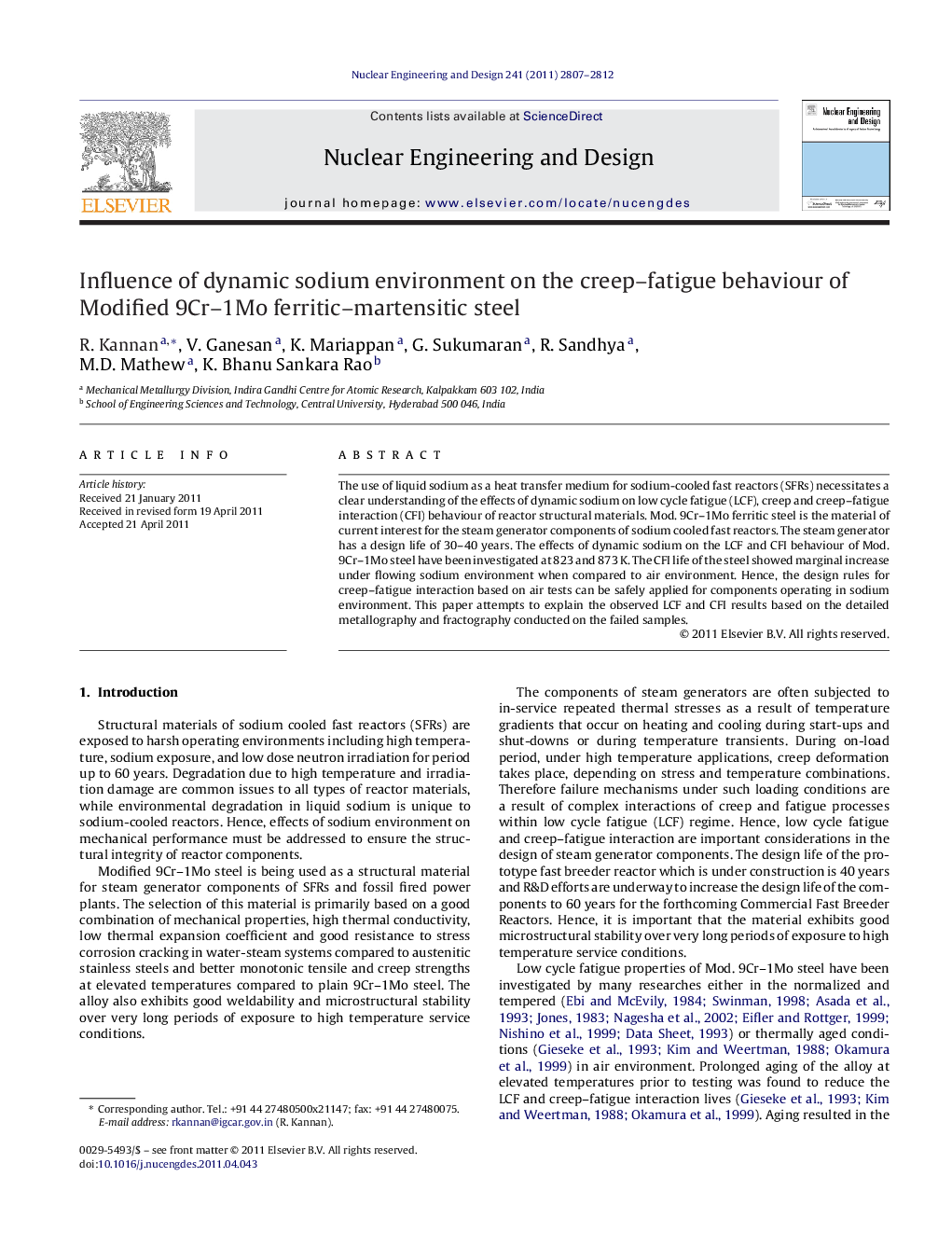| کد مقاله | کد نشریه | سال انتشار | مقاله انگلیسی | نسخه تمام متن |
|---|---|---|---|---|
| 297397 | 511756 | 2011 | 6 صفحه PDF | دانلود رایگان |

The use of liquid sodium as a heat transfer medium for sodium-cooled fast reactors (SFRs) necessitates a clear understanding of the effects of dynamic sodium on low cycle fatigue (LCF), creep and creep–fatigue interaction (CFI) behaviour of reactor structural materials. Mod. 9Cr–1Mo ferritic steel is the material of current interest for the steam generator components of sodium cooled fast reactors. The steam generator has a design life of 30–40 years. The effects of dynamic sodium on the LCF and CFI behaviour of Mod. 9Cr–1Mo steel have been investigated at 823 and 873 K. The CFI life of the steel showed marginal increase under flowing sodium environment when compared to air environment. Hence, the design rules for creep–fatigue interaction based on air tests can be safely applied for components operating in sodium environment. This paper attempts to explain the observed LCF and CFI results based on the detailed metallography and fractography conducted on the failed samples.
► The effects of dynamic sodium on the CFI behaviour of Mod. 9Cr–1Mo steel has investigated.
► The cyclic stress response of Mod. 9Cr–1Mo steel under flowing sodium environment is similar to that of air environment.
► The creep-fatigue endurance of the alloy is found to decrease with introduction of hold time and with increase in the duration of hold time and the factor of life increase in sodium compared to air environment is reduced with increase in hold time.
► In contrast to air environment, tensile holds were found to be more damaging than compression hold in sodium environment.
► Design rules based on air environment can be safely applied for the components operating in sodium environment.
Journal: Nuclear Engineering and Design - Volume 241, Issue 8, August 2011, Pages 2807–2812